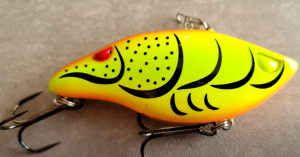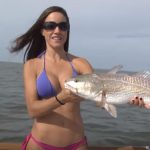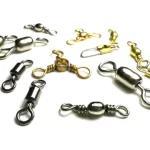Glenn May of BassResource shares valuable insights on using lipless crankbaits, also known as vibrating lures, rattling baits, or classics like the Rat-L-Trap. With years of experience, he breaks down the key strategies, gear recommendations, and modifications that can increase success with these versatile lures. Lipless crankbaits have remained a staple in tackle boxes for decades, offering reliable performance in a variety of fishing conditions.
Top Lipless Crankbaits
-
SPRO Wameku Shad – Link
-
SPRO Essential Series Aruku Shad – Link
-
Bill Lewis Rat-L-Trap – Link
-
Booyah One Knocker – Link
-
Yo-Zuri Rattl’n Vibe – Link
-
Duo Realis Apex Vibe Lipless Crankbait – Link

Choosing the Right Lipless Crankbait
With so many brands producing lipless crankbaits, narrowing down selections can be a challenge. Sticking to three to five reliable brands helps in understanding the subtle differences in sound, action, and performance. Some models contain steel or tungsten rattles, while others are silent, creating unique vibrations that attract bass in different conditions.
A 1/2-ounce size is the most commonly used and works in about 80% of situations. However, smaller sizes (1/4 to 3/8 ounce) tend to be more effective right after the spawn and during the fall when baitfish are smaller. For deeper fishing, heavier options (3/4 to 1 ounce) work well in summer and winter.
Color Selection
With countless colors available, choosing the right one can be simplified by focusing on three main categories:
-
Baitfish Imitations – Colors mimicking shad, perch, or bluegill work well across various regions. Shad patterns excel in the southern U.S., while perch colors are more effective in northern waters.
-
Crawfish Patterns – Red craw colors perform best in the spring, while brown and green crawfish hues are reliable throughout the rest of the year.
-
Chartreuse Accents – Firetiger and similar bright patterns help trigger strikes, especially in the fall when smallmouth bass key in on bold colors.
Ideal Rod, Reel, and Line Setup
A moderate-power, medium-action crankbait rod is ideal for these lures, offering enough flex to absorb sudden surges and keep treble-hooked fish pinned. A 7:1 gear ratio reel provides the right balance of speed for various retrieves.
Fluorocarbon line is recommended, typically in 12-pound test for most situations. This line offers some stretch, reducing the risk of bass throwing the hook. In weedy areas, a medium-heavy, fast-action rod paired with 15-pound fluorocarbon provides the extra power needed for ripping the lure free.
Effective Retrieval Techniques
-
Steady Retrieve – Simply casting and reeling at a consistent speed remains a reliable approach.
-
Burning Retrieve – Speeding up the retrieve creates a fleeing baitfish effect, often triggering aggressive reaction strikes.
-
Yo-Yo Technique – Lifting and dropping the bait mimics a wounded fish and works well in deeper water.
-
Stop-and-Go Retrieve – Pausing intermittently allows the lure to flutter down, provoking strikes from trailing bass.
-
Weed Ripping – Letting the lure tick the tops of submerged vegetation before sharply ripping it free generates reaction bites.
Modifications for Better Hookups
Upgrading treble hooks can improve hookup rates, particularly on the rear of the lure. A slightly larger rear hook increases the chance of catching bass that swipe or nip at the bait. Sharp hooks are essential, ensuring better penetration and reducing missed strikes.
Lipless crankbaits have stood the test of time for good reason. Mastering these baits, fine-tuning retrieves, and optimizing gear selection can lead to more consistent success on the water.
Image/Source: BassResource





